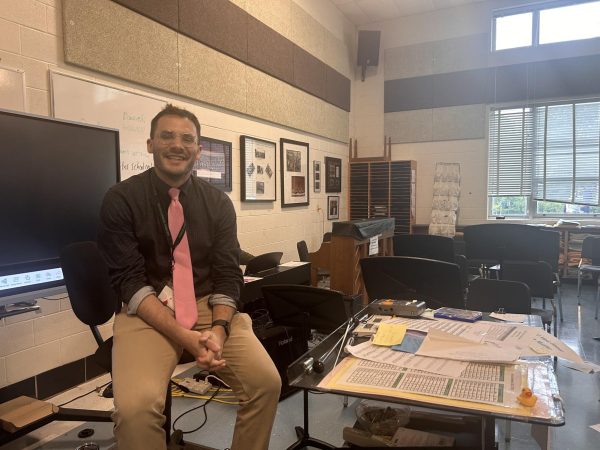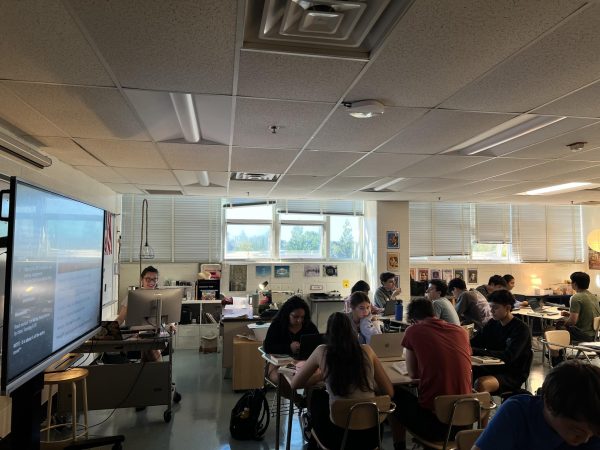Seasonal Affective Disorder Makes Many Unhappy Around Holidays

Infographic by Izzy McMullen
Women outnumber men in the US in terms of having Seasonal Affective Disorder.
Nov 24, 2014
During the holidays, many people develop a mood disorder called Seasonal Affective Disorder. Seasonal Affective Disorder (SAD) often causes people to become very tense and depressed over the holidays because of the change in seasons.
“I don’t think there’s one way that it develops, but a decrease in the amount of sunlight people get could be a cause,” said school nurse Ki-Nam Kim.
This disorder has become very common in individuals, especially women, who live in places where there is a colder climate and not very much sunlight. These places are mostly far from the equator. For instance, Canada and Maine will have a greater number of people with the disorder then those living in Florida or another tropical place near the equator. Some people may develop SAD in late spring and summer, but the disorder is not as severe as it is when it occurs in winter.
“In the winter, the sun isn’t as prominent as it would be in the summer, causing some to experience symptoms of depression or another illness relating to the amount of sunlight,” said pediatrician Lawrence Cohen.
Some symptoms of SAD in general include having a depressed mood most of the time and feeling hopeless or worthless. People affected by the disorder may have low energy and have trouble sleeping, which may result in them feeling sluggish. Some more severe and visible symptoms include loss of interest in activities and difficulty concentrating and thinking clearly. The most serious symptom is having frequent thoughts of death or suicide.
“The sunlight is very important to our body. People are very sensitive to that sunlight and they need more light and energy to function. If there is limited sunlight, people may start to feel depressed and develop this disorder,” said Kim .
Along with general indicators of Seasonal Affective Disorder, symptoms can also change with each season. In the winter, some common symptoms may include sudden weight gain, loss of interest in activities, social withdrawal and an increase in the amount of sleep because of the gloomy mood. These people with the disorder are often very irritable and do not feel happy around supposedly joyous winter holidays. The disorder affects a considerable amount of population.
“In the most recent statistic from NIMH, SAD is experienced by 4-6 percent of the US population,” said Acquard.
People with SAD may also have symptoms throughout the summer and spring. These people often show signs of depression, insomnia, anxiety and agitation, similar to symptoms in winter. They may also lose a large amount of weight from their decreased appetite.
“It is simply a disorder in which people experience depressive symptoms during the winter months when there is a decrease in daylight. Our body rhythms don’t coordinate with the amount of light and this causes a disturbance,” said psychology teacher Geraldine Acquard.
Although Seasonal Affective Disorder is considered an illness by doctors and even scientists studying it, like most disorders, there are no real treatments to cure people. The best thing these people can do is be supported and comforted by others.
“This illness still doesn’t have a cure and won’t have a cure, but any other illness or condition has a way to detect the problem and fix it. Now they have ways to determine the symptoms and can help people using supportive groups and medications,” said Kim.
Similar to other forms of treatments for depression, people may seek medical attention and attend support groups and therapy talks to improve their conditions. It is also helpful for them to be around loved ones during the happy celebrations and holidays throughout the winter season.
“Light therapy, psychotherapy, and medications are the main treatments for SAD. Also, stress management and exercise programs can be helpful,” said Acquard.
By getting enough sleep, eating healthy foods, exercising more often, and talking about feelings can help individuals with SAD manage their feelings during the wintertime. Kim agrees with Acquard that light therapy and more exercise can help alleviate SAD symptoms.
“Some people may participate in behavioral therapy by exercising more, getting up early and eating well. These kids may attend groups or other therapy to help them improve,” said Kim.
The exact causes of Seasonal Affective Disorder are unknown, but gender, age, genetics, already having clinical depression or bipolar disorder and living far from the equator are potential causes of SAD.
“Any illness may interrupt a relationship, but [loved ones] need to know about it, so they can help. It takes a while for even the person experiencing SAD to realize they have this disorder. They just need to have support by others,” said Kim.
This disorder has greatly affected many people around the world. Many other countries add up to show just how much light and energy affects the body. The SAD rate for North America has been estimated at anywhere from 1.4 percent to 9.7 percent.



















